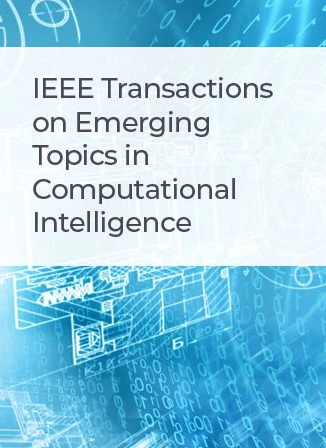Simultaneous Segmentation and Classification of Esophageal Lesions Using Attention Gating Pyramid Vision Transformer
IF 5.3
3区 计算机科学
Q1 COMPUTER SCIENCE, ARTIFICIAL INTELLIGENCE
IEEE Transactions on Emerging Topics in Computational Intelligence
Pub Date : 2024-11-04
DOI:10.1109/TETCI.2024.3485704
引用次数: 0
Abstract
Automatic and accurate segmentation and classification of esophageal lesions are two essential tasks to assist endoscopists in Upper Gastrointestinal Endoscopy. However, there is no intelligent system that can diagnose more lesion types, handle multiple tasks simultaneously, and be more accurate in clinical work. Therefore, we present an innovative Multi-Task deep learning architecture named Attention Gating Pyramid Vision Transformer (AGPVT), which provides a solution for the accurate classification and precise segmentation of lesion types and regions simultaneously. The proposed AGPVT combines the benefits of cutting-edge deep learning model designs with Multi-Task Learning (MTL) in order to advance the field. Furthermore, a patch-wise multi-head attention gating method alongside a hybrid design MTL decoder, is employed as the core driving architecture of the AGPVT. Comprehensive experiments are conducted on a multicenter dataset which contains esophageal cancer, Barrett's esophagus, esophageal protruded lesions, esophagitis, and normal esophagus. Experimental results show that the proposed AGPVT achieves a classification accuracy of 96.84%, an IoU score of 85.61%, and a Dice score of 90.75%, outperforming existing methods and demonstrating its effectiveness in this domain.求助全文
约1分钟内获得全文
求助全文
来源期刊

IEEE Transactions on Emerging Topics in Computational Intelligence
Mathematics-Control and Optimization
CiteScore
10.30
自引率
7.50%
发文量
147
期刊介绍:
The IEEE Transactions on Emerging Topics in Computational Intelligence (TETCI) publishes original articles on emerging aspects of computational intelligence, including theory, applications, and surveys.
TETCI is an electronics only publication. TETCI publishes six issues per year.
Authors are encouraged to submit manuscripts in any emerging topic in computational intelligence, especially nature-inspired computing topics not covered by other IEEE Computational Intelligence Society journals. A few such illustrative examples are glial cell networks, computational neuroscience, Brain Computer Interface, ambient intelligence, non-fuzzy computing with words, artificial life, cultural learning, artificial endocrine networks, social reasoning, artificial hormone networks, computational intelligence for the IoT and Smart-X technologies.
 求助内容:
求助内容: 应助结果提醒方式:
应助结果提醒方式:


